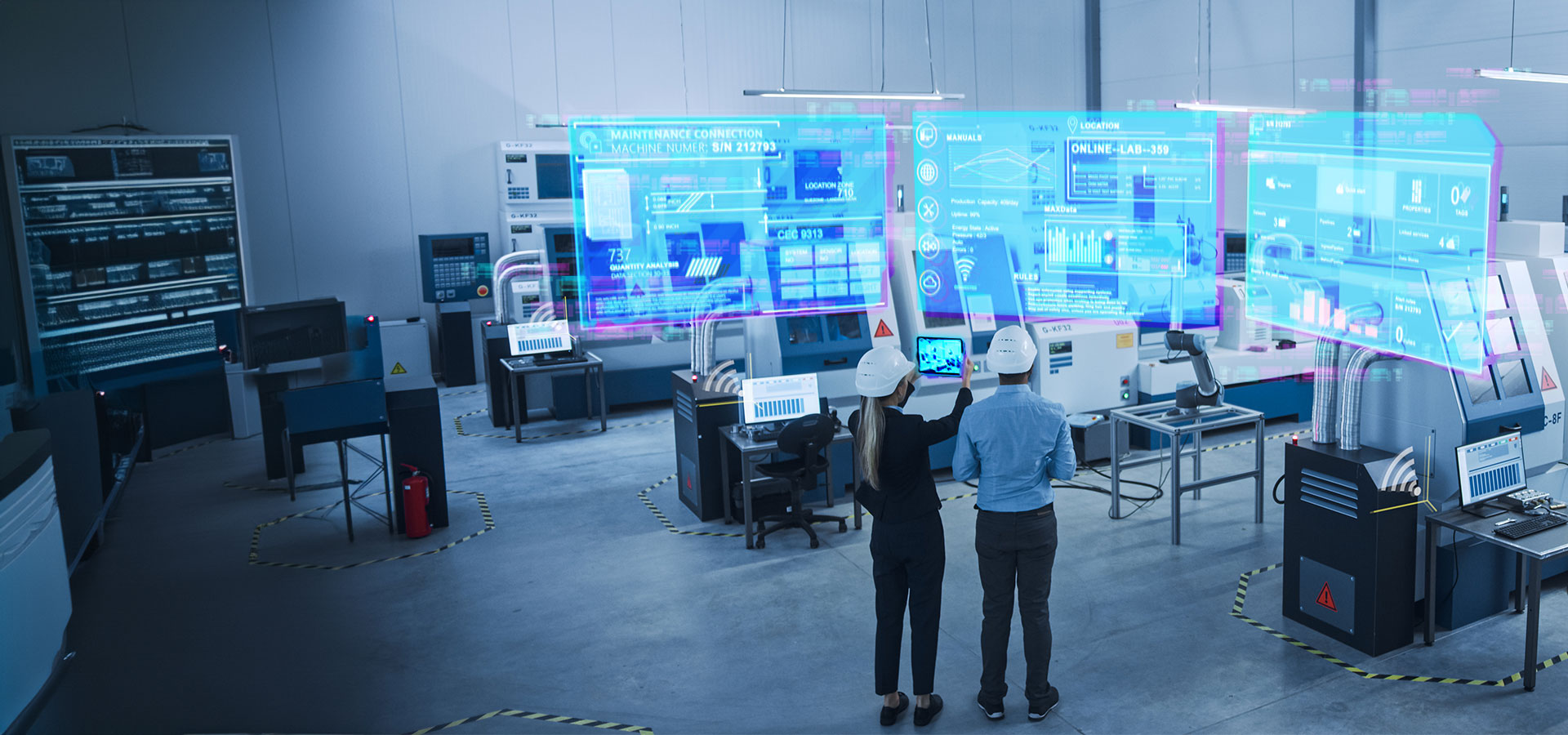
#24: What Are the Challenges Facing Industrial Equipment Manufacturers Today?
Discover how virtual twin experiences are shaping the future of industrial equipment manufacturing.
#24: What Are the Challenges Facing Industrial Equipment Manufacturers Today?
Join Arvind Krishnan and Bertrand Lacoste Bourgeacq as they explore how virtual twins in operation are transforming the industrial equipment industry. Discover how the 3DEXPERIENCE platform creates customer-specific generative universes, enhances after-sales services, improves profitability and revolutionizes the way companies approach equipment maintenance and sustainability.
Get inspired by the possibilities of a more sustainable industry. Click here to find out more.
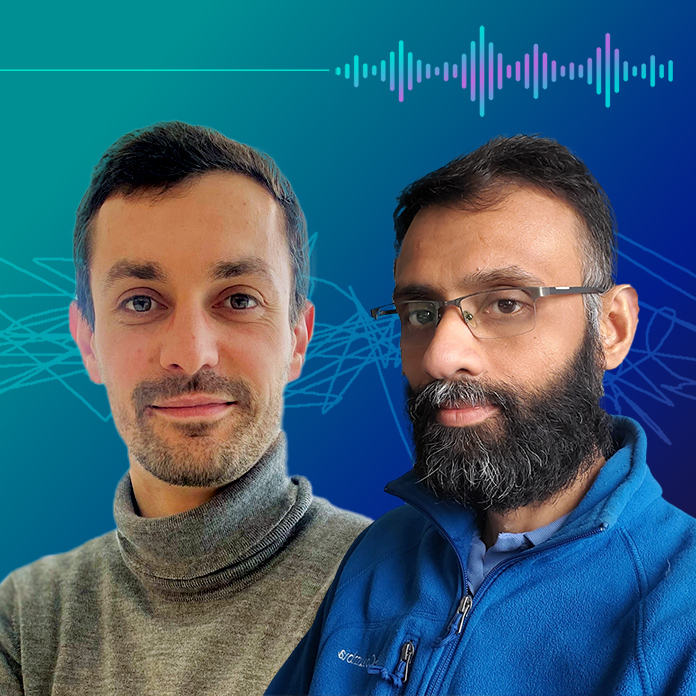
Meet our speakers
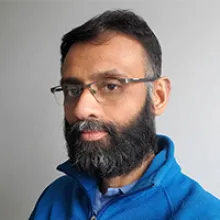

You don’t need another software platform specializing in maintenance data... we have all the means to make sure that R&D, manufacturing, service and all the field operators are connected and are sharing the same source of information.”
Bertrand Lacoste Bourgeacq
Read the transcript
Narrator: Welcome back to Disruptors Unleashed, the series that explores the disruptive technologies shaping our world and the trailblazers igniting change across industries. Previously, we joined Philippe Bartissol and Morgan Zimmerman from Dassault Systèmes as they discussed the impact of the virtual twin on the industrial equipment industry.
Today’s episode explores this topic further. Our experts, Arvind Krishnan from Lifecycle Insights and Bertrand Lacoste Bourgeacq from Dassault Systèmes, look at the after-sales market — and how the 3DEXPERIENCE platform is changing the way companies approach equipment maintenance and sustainability.
Arvind Krishnan: Hello and welcome to this podcast where we discuss the applications of the virtual twin experience in the industrial equipment manufacturing sector. My name is Arvind Krishnan, a senior industry analyst from Lifecycle Insights, and I'm your host today. Today, we have with us, Bertrand Lacoste Bourgeacq from Dassault Systèmes. Bertrand is the senior solution and technical manager for the Industrial Equipment vertical. Bertrand, welcome to this podcast.
Bertrand Lacoste Bourgeacq: Hi, Arvind. Thanks for having me. I'm very happy to be here.
Arvind: Thank you. As we jump into this discussion, it is important to set the context for our listeners, Bertrand. So, let us talk a little bit about the disruptions that are happening in the industrial equipment sector. As a solutions manager, what challenges do you see in this particular sector, and what challenges do these industrial equipment manufacturers face today?
Bertrand: Yeah, so, you know at Dassault Systèmes, we want to position ourselves as a a trusted industry transformation partner, not just a software provider. And in this context, what we really focus on is what our customers — so, in my context, industrial equipment manufacturers — what they value the most, what is critical to them. And so, when we tackle this specific question of what is very, very important for industrial equipment manufacturers, after-sales service is a key area, a key organization on which we need to focus. One of the reasons is the fact that today, in traditional business models, service activities, after-sales activities are central for the profitability of OEMs (original equipment manufacturers). These activities represent between 20% up to 55% of their total sales, but most importantly, they contribute to the company EBIT from 40%, sometimes up to 90%.
So that's for traditional business models, but we see also, like, emerging new business models where the users of the equipment want to limit the investments that they're making. They want to maximize the flexibility of usage of this equipment with performance-driven contracts that we like to capture as a transformation trend called Equipment-as-a-Service (EaaS). Also, what we see is the fact that there's a growing competition, you know, with third parties that are fighting on maintenance contracts. And when we just stated the fact that maintenance activities, service activities are driving the profitability of OEMs, they need to fight for this. And it's becoming more and more difficult with labor shortage that we see as well, in particular qualified machine operators shortage, which means that at some point OEMs need to make sure they capitalize on knowledge, know-how, to make sure that their workforce — that is— for which there is a lot of turnaround —always has the means to maintain equipment.
And last but not least, when you think about sustainability, circularity, where industry clambers to become carbon-free, socially responsible, and regulation-compliant, when you think that 65% in average of greenhouse gas emissions come from the commissioning, the field service activities, resales, and finally the disposal of the equipment, it's definitely an area to focus for industrial equipment manufacturers. All the lifetime for once the equipment are in operation at the customer site. So, this is to set the context of what we're gonna discuss I think today, Arvin.
Arvind: Thank you, Bertrand, for highlighting these challenges. And indeed, it is eye-opening that 40% to 90% of the EBIT is controlled by the after-sales maintenance and other activities. So that's really a very big portion of the profitability of these companies. So, I can really understand how the after-sales becomes important.
Arvind: Now, since you are a part of Dassault Systèmes, it is only appropriate that we talk about the virtual twin experience next. The 3DEXPERIENCE platform of Dassault Systèmes has multiple applications for different industries. So let us talk about some of the specific solutions that are available for the industrial equipment manufacturing sector. So, what kind of solutions are available as a part of the virtual twin experience for this particular manufacturing segment?
Bertrand: Sure. So, once we understood, you know, what our customers… what industrial equipment manufacturers are valuing the most, what's most critical for them, we try to understand, you know, the way they work today. We call that methodologies or business processes. And then, we try to identify what are the major KPIs that we as a transformation partner at Dassault Systèmes, we need to be helping our customers play on. And when we have a look at these KPIs, we talk about the fact that we need to make sure that we help OEMs maximize the availability of the equipment once it's in operation at the customer site. We need to make sure that these OEMs increase their market share so they increase the number of maintenance contracts, that they reduce the cost of their service operations so that they maximize the profitability.
And last but not least, customer satisfaction. Since you're making sure that the equipment is available at the customer site, you're also trying to reduce the number of claims that you get from your customers, or at least speed up the resolution time of those claims. So, when we have this in mind, what are we trying to focus on? So, from the cost of service operations, or let's say from the execution of the service activities, we need to make sure, at Dassault Systèmes, that we have the right solutions to be able to provide our customers the capabilities to… for example, make sure that the field technicians, once they are having a maintenance or repair activity at their customer site, they have access to the right technical information at the right time.
That means there is a short list of, for example, replaceable parts that are compatible with the equipment that is running at the customer site. They need to be able to identify… to understand how to replace it. So that means leveraging the right technical information, but with, for example, 3D-based use, animated use, and they need to be able to have the list of… actually, the procurable parts that they can order for them to repair. They also need to be able to have an accurate representation, virtual representation of this equipment that is in operation, because the field technicians are going to be doing a lot of activities on each of those equipment once the equipment is on site and they're repairing. So, we need to make sure that industrial equipment manufacturers are able to track the changes that are applied on the real equipment that is in operation, so that the specific information hosted by the virtual twin experience of this specific equipment is always up to date.
And we need to make sure as well that, once that there is a problem, once there's data that is collected from the field and that is linked to the equipment, this data, this piece of information is contextualized in the virtual twin, the specific representation of the equipment, for better understanding, to take the right decision, to make sure that the right actions can be triggered based on this kind of information that could be tied to the product health.
So once we have all of this in mind, what do we do at Dassault Systèmes, and specifically in my team? We identify what are the packages of software applications that we can provide that are going to enable industrial equipment manufacturers to transform the way they work today in after-sales. And that starts, for example, with an industry process experience that we call service process engineering or design for service. Making sure that early, during the new product introduction processes, industrial equipment manufacturers, and most importantly, their service engineers, are going to be able to, let's say, consume the information that is coming from the design organization. So, the engineered definition of an equipment to make sure they can plan how to maintain it. Once it will be installed, they can study its maintainability; they can study their reliability, how easy it's going to be able to dismount some of the parts to replace them. And since they will be leveraging in the same user experience, the 3D information tied to the definition of the product, they will be able to leverage this kind of information to identify for each— to define for each service part or for each repair, or maintenance operation, the right 3D-based instructions. We call these work instructions.
So that's the first part, making sure that the R&D organization have all the information that they need to be able to reduce the time they're spending on updating the service engineering data, thanks to connecting the dots with engineering, and all of that with change management and configuration management. And doing so, they can also leverage the 3D to verify the maintenance friendliness very early in product development. But once you have that, and once you're going to — as an industrial equipment manufacturer, sell the equipment — actually you're going to make sure that you are creating a specific representation of the equipment that your customer is purchasing that will contain the engineering definition.
So, what is exactly this specific equipment composed, in terms of parts? What were the different options, variants that were selected? And most importantly, the specific information about how you're going to maintain. And you take that from the R&D organization that has done the work before. So, you extract from this general representation that all— what you can sell, the specific service information related to the product.
And that is going to be essential. Because, this is the kind of information that is going to be provided, with the right user experience, to the field technicians that are going to access this kind of data once they have to perform an activity on this specific equipment. That stands for installation, commissioning, and then all over the lifecycle. And to do so, we have a combination of data, PLM data, tied to the product definition data that is created within the 3DEXPERIENCE platform. But we also combine that with information that is outside of the 3DEXPERIENCE platform: Transactional information, for example, in the ERP, customer information to be able— to provide the context to the field technician about the customer.
And most importantly, we understand, you know, that… you have industrial equipment manufacturers that have an installed base of equipment that are already running at their customer sites. So, it's very important for us not only to create for the new generation of equipment, this service data, tied to the product definition, but we also need to be providing to our industrial equipment manufacturers the capabilities to have all the data related to their equipment that are already in operation inside the same user experience, so that we change the way they're operating today with individual product data, dispatch across many different databases and field technicians that have some real struggle finding out in all these databases, what is exactly the kind of information that they need. If we're able to bring all this data in one single environment and make sure that this… you have the right user experience for these field technicians, even for their installed base to access this data, it is key to their success at the end.
And this is done with an industry process experience that we call data-driven installed base cockpit. So, making sure that the new generation of equipment, that will have the virtual twin experiences with 3D, you could leverage exactly the same thing with data concerning the installed base that is already existing. And… the last pillar of our solution set is: How do you make sure that you're maintaining over time, all of this data for new equipment, but also for existing equipment? How do you maintain it over time, based on all of the activities that are going to happen on the field? Based on… for example, the fact that you had equipment that you were maintaining for a certain amount of time, you lost the maintenance contracts, but you won it back like five years. And so how do you make sure you maintain all this data so that it's always accurate?
Because it is only if the data is accurate that the field technician is going to be able to perform the right activity. So, to do so, we have an industry process experience that we call virtual twin in operation sustainment. So making sure that we have the right capabilities and easy-to-use capabilities for service organizations that are not used to manipulating PLM data, product data — and data that is outside of the platform brought in the context of the virtual representation of a specific twin — making sure that they have easy ways based on the log of activities that happen on the field, they can make sure that all the information is always updated and you keep the history of everything that happened related to specific equipment. And you take decisions when you need to drastically change the representation of an equipment.
So, I would say that these three pillars— making sure that first, R&D organizations for new equipment are able to define the right service information, service bill of materials, service instructions, tasks, and with easy-to-understand, easy-to-use animated instructions. Making sure that, then, also for the existing equipment that are already in operation, industrial equipment manufacturers have the capability to remove all their technical databases that are siloed, that are costly to maintain, bringing all this information into a single environment for technicians to have access to that. And then making sure that this data… this is going to evolve over time, can be maintained, and all the changes can be tracked.
Arvind: Thank you, Bertrand, for this recap. You know, it is certainly an impressive set of capabilities that you have as a part of the virtual twin experience. So, if I'm an industrial equipment service technician… I go into a site, I need to come back as quickly as possible, solving the problem. And you have all the ecosystem available for someone like me to actually get the job done. And that determines the customer satisfaction that determines the profitability of the industrial equipment. So, certainly quite an impressive set of functionalities you have here.
Arvind: Let me put myself into the shoes of an industrial equipment manufacturing executive, right? I'm certainly impressed by the virtual twin experience that you just described to us in great detail. I'm impressed by what it can do for my company. Now, the question is, how should I get started? I have absolutely no relationship whatsoever with Dassault Systèmes up till now, but I'm completely impressed. Give me a few ways by which I can get started.
Bertrand: How do you put your transformation in motion? That is a very, very important question. So, there are different angles of attacks, but I'm going to focus maybe in the context of this podcast on one. I would say that maybe one angle of attack is making sure that as an industrial equipment manufacturer, you need to tackle your installed base first. All right? And you need to tackle your installed base in a way that it's going to be compatible with… once you implement the creation of virtual twin experiences, right from the beginning, meaning right from R&D. So, for new equipment. So how do you do that? So, of course, you have databases that contain technical information related to all your equipment that are in operation.
These technical databases are siloed, difficult to maintain. You need to build software interfaces between them. So, first question that we need to make sure, once we work as a partner with you, is make sure that what is the data that is required for whom in your company? What are the use cases? And how often is this data changing? Once we understand the data that is important to solve a specific challenge in your company, and most importantly, for your field technicians, we are able to build what we call a taxonomy, meaning the classification of all the information that you have already available, and make sure that this information is structured in a way that it can be easily then accessed and made available to your field technicians.
And once we have this taxonomy, so— we have the capabilities with what I mentioned before, which an industry process experience that is called data-driven installed based cockpit, we will have the ability to create the right user experience, bring all this data in the right structure from these technical database tests that you can remove within the 3DEXPERIENCE platform, so that you have one unique environment for your field technician to find where the information is.
Once you have this information, you can implement the next step of your transformation, which is putting in place a way to maintain it since the data is already in an environment, a unique one. And since this environment, which is the PLM platform, the product definition platform, has all the change capabilities automated that can be leveraged, it’s really easy to put in place, making sure that you track the changes of the data corresponding to your installed base.
Once you have done that, I would say that the next step would start to be for some of your product lines, implementing, right during the engineering, the new product introduction. The right service engineering information, structured in a way that it will then populate for new equipment. It will populate this user experience with all the information related to the existing equipment that you have. So, implementing a PLM transformation related to your service organization where you will have service engineers that will be able to create the right service bill of materials in a structured way, the right instruction 3D-based, and the right sequence of tasks.
And this is how I would tackle it. Start from the installed base. And make sure that once you have created the track taxonomy of this installed base, that you start populating for all the new equipment, service technical information, in a way that it's going to enrich — with 3D-based information, for example — all the information contained in this new installed base cockpit experience.
Arvind: So, let us shift gears and talk finally about the after-sales operations, right? You mentioned several times the word silos, and I have also been told that after-sales operations in many of these industrial equipment companies often operate in silos and are completely disconnected from their product development/R&D functionalities, right? Can you talk to us a little bit about it? And what advice can you offer industrial equipment OEMs who are considering a strategy for their after-sales operations, a strategy that might encompass how to, you know, connect better with the R&D and other upstream functionalities of the organization?
Bertrand: I understand your question. I think to answer it, I'm going to do a short parallel with what I mentioned at the very beginning. At the very beginning, I mentioned the fact that when it comes to maintaining equipment, there are a lot of third-party start-ups with the right software solutions that are positioning themselves as competitors of industrial equipment manufacturers on the maintenance contracts.
When you think about digital transformation on after-sales, you have exactly the same situation. You have, in fact, third-party software providers that are specialized in maintenance information, trying to specialize themselves in how to manage the installed base. But if you think about it as an industrial equipment manufacturer, if you want to be more agile, if you want to reduce costs, if you want to make sure that you improve your time to market. All of that is only possible if you reduce the number of software platforms that you are going to manage over time at your company level. So, of course, you need a CRM to manage your customers. Of course, you need an ERP to be able to manage all the transactions. Then you need a platform that is going to have all the definition of the product, generic definition of product that you can sell and specific definition of product that you have sold and that you have put in operation at the customer site.
And within this platform, you have both, as I mentioned, generic information, R&D information related to what the customer can sell. But you also have all the information related to how you're going to maintain specific equipment that are already running. You have the product definition of each equipment that is in operation at your customer site. You don’t need another software platform specializing in maintenance data, because first thing you're going to need to interface your PLM platform with this software platform, whereas you have Dassault Systèmes with the 3DEXPERIENCE platform combining these two in one.
So of course, I'm preaching a little bit on the 3DEXPERIENCE platform here. But it's true. We have all the means to make sure that both worlds, R&D, manufacturing, service and all the field operators are connected and are sharing the same source of information. And then the fourth platform that you need is your execution system, both for manufacturing, of course, but also for making sure that you can then have the right applications, mobile applications, to track everything that you're executing at the customer site or in the shop floor if you're talking about manufacturing.
So, reducing the number of software platforms to reduce the cost of interfacing the software platforms together, and make sure that all the information is in the same user experience at a single repository in a single database, I would say. And you don't need, I would say, to go for some siloed software solutions, specialized maybe in collecting maintenance data, et cetera. You need to tie that within the product definition platform, which is the PLM platform, which is the 3DEXPERIENCE platform.
Arvind: Excellent. Thank you, Bertrand. I think we've had an excellent and interesting discussion around the industrial equipment manufacturing sector and how the virtual twin experience provided by the 3DEXPERIENCE platform can help these manufacturers. I'm sure we have a lot more to discuss, but in the interest of time, I think we will have to stop our podcast today. We have several interesting topics such as design for service that we can take up and discuss further in an upcoming podcast. But before I go, I sincerely thank you for your time today and for all the insights you provided us today. Thank you, Bertrand.
Bertrand: Thank you, Arvind. Thanks for having me, and thanks for the very interesting questions and discussion.
Disruptors Unleashed is produced by Dassault Systèmes. For more episodes, follow us on Apple Podcasts, Spotify, Deezer, or your nearest streaming platforms. To learn more about Dassault Systèmes, visit us at 3ds.com.
Learn more
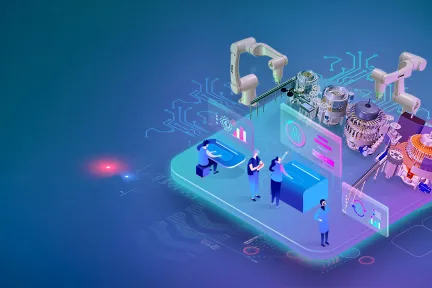
Leverage the 3DEXPERIENCE platform for greater field operations efficiency, after-sales services and success in the industrial equipment scene.
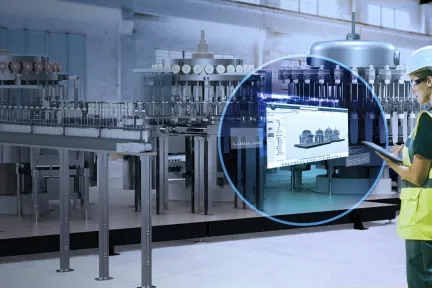
Virtual twins and advanced analytics drive performance optimization, operational efficiency, and superior customer service.



